The year's best avant-garde and experimental music includes both Merzbow, the biggest name in noise, and Moor Mother, its most exciting new star. There's artists that sculpt with cassette tapes, overtones, generative software and field recordings of Icelandic geothermal activity. And a pair of Grammy-nominated albums, soundtracking one of 2016's most popular TV shows, may be a gateway to experimental music for years. Here's 2016 in the off-center and exploratory.
20. Bethan Kellough, 'Aven'
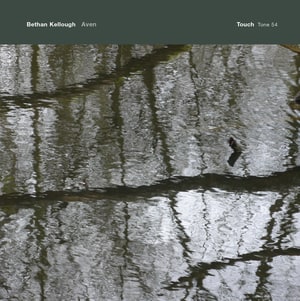
Los Angeles–based artist Bethan Kellough accompanies some fairly gorgeous field recordings of Earth – geothermal activity in Iceland, wind rushing through the bushes in a South African savanna – with a tasteful amount of her own violin. The blend of rushing wind with her cinematic sweeps, part documentary and part whimsical fiction, is sometimes magical and sometimes terrifying.
19. Masami Akita and Eiko Ishibashi, 'Kouen Kyoudai 公園兄弟'
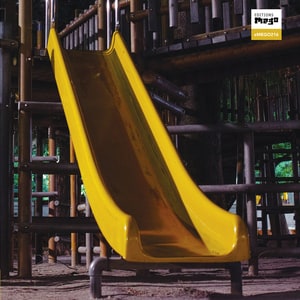
Scene leader Masami Akita (better known as Merzbow) and Steely Dan–esque prog-pop composer Eiko Ishibashi join forces for a mixed-media noise statement. Side A ("Slide") is more uplifting than thresher-izing, more ecstasy than oblivion: Synth drones get into dissonant friction with harsh feedback, and tumbling double kick drum sputters like a jazz-trained Alex Van Halen. Side B ("Jungle Gym") is slightly more doom-centric, as a piano duets with skitters of computer glitch, cascading under a frenzy of electronics and then limping to the finish line in some sci-fi quicksand.
18. Moor Mother, 'Fetish Bones'

A shot of vodka in 2016's Lemonade, Philadelphia musician/activist Moor Mother shouts down American white supremacy with venomous bursts of harsh noise. A mix of the unflinchingly vivid protest poetry of the Last Poets, the clashing sounds of Sun Ra, the emotionally sampledelic worlds of DJ Spooky and the bleak bursts of Whitehouse, the debut LP from Camae Ayewa yells bloody murder about Ferguson and drops bombs on plantations. The year's most notable power electronics record turns its knives outward, not inward.
17. Chippendale/Gustafsson/Pupillo, 'Melt'
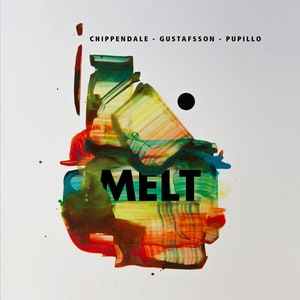
This summit for three hard-playing iconoclasts of aggro-skronk – saxophonist Mats Gustafsson of the Thing, bassist Massimo Pupillo of Zu and drummer Brian Chippendale of Lightning Bolt – is a beast where the chops and fury of noise-punk, snuff jazz and art-metal combine into a giddy mosh. Beyond a few minutes of rhythmic cohesion, it would be hard to argue that the trio exactly "jell" on the 32-minute opener: Chippendale in improv mode often sounds like a dumptruck of marbles being slowly poured onto a drumkit. But the joy is in the mess-making, an ecstatic jumble that's both mischievous and menacing, light in attitude but heavy on both distortion and sweat. The 46-minute closer, "Flesh. Transformed. Melted.," starts with a ponderous story about Metallica and then rocks and feeds back appropriately.
16. Mica Levi and Oliver Coates, 'Remain Calm'

At turns elegant and weird, this collaboration between Mica Levi (the auteur behind the unsettling soundtracks to Under the Skin and Jackie) and Oliver Coates (composer and Radiohead cellist) is a compelling piece of electroacoustic sculpture that bends the familiar textures of pop, modern classical and dance music. Under 28 minutes long, Remain Calm blends the natural and the virtual. Coates' lyrical, occasionally treated, occasionally animalistic cello accompanies dub loops, sunrise drones, vaporwave-y loops and glitchy skitter. Together on the 43-second "Schoolhouse," the pair creates lush, echoing stabs that could be used by Timbaland or Dr. Dre, and splay them into a pointillist array.
15. Oren Ambarchi, 'Hubris'

The lengthy, percussive, slowly expanding motorik journeys on the latest from the ever-restless multi-instrumentalist Oren Ambarchi are a little bit In C, a little bit minimalist techno, a little bit Giorgio Moroder and a little bit Blue Man Group. Ostensibly influenced by Wang Chung's To Live and Die in L.A. soundtrack, these late-night trips down the autobahn are especially notable for the jazzlike solos from hitchhikers they pick up along the way: synthesized Tangerine Dreaming from Jim O'Rourke, colorful blips from Keith Fullerton Whitman, vintage No Wave skronk from Arto Lindsay and more. A funky, fusion-y journey into many colors of whine, whoosh and strum.
14. Overtone Ensemble, 'Overtone Ensemble'
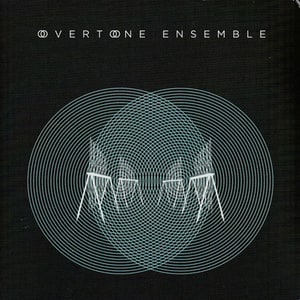
Melbourne's Overtone Ensemble make drone music at its most fragile, intimate and thought-provoking: high-pitched and often more like tinnitus than a song. Playing homemade "vibrissa instuments" that involve stroking aluminum rods, the quartet gently squeals out minimalist, microtonal music that's totally acoustic – a shimmering, pulsating, clashing long-distance squeak that allows listeners to exploring living, breathing sound waves. Matching the vibrissas with singing bowls and scuba gongs only opens up new sound worlds. For this truly one-of-kind group, it's not the notes you play, but what the notes do after you play them.
13. Ian William Craig, 'Centres'
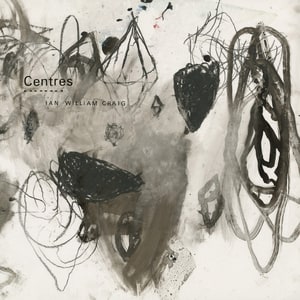
The sound of slowly decaying cassette tape, made relatively famous on William Basinski's 2002 album The Disintegration Loops, is becoming strangely iconic, embraced in 2016 (by accident or design) by both Bon Iver and Death Cab for Cutie's Chris Walla. On his highest profile release to date, Vancouver's Ian William Craig turns the practice into something almost auteuristic, conducting orchestras of broken and delaying and distorting cassette players through a 10-minute drone suite ("Contain (Astoria Version)") or a sepia-toned nostalgia-mush that approaches romantic indie rock ("A Single Hope"). At once muted and blown-out, past-gazing but post-modern, noisy but elegant, Craig uses his operatic voice and reams of garbled tape to create the sound of gauzy dream sequences.
12. Kaitlyn Aurelia Smith, 'Ears'

On this expressive suite of Technicolor bubbles, a slew of consonant harmonies, clashing rhythms and voice-modulated alien melodies combine into twinkling, burbling beauty. Using the Buchla Music Easel (with accents from the pastoral worlds of classical guitar, piano and freak-folk), Los Angeles–based Kaitlyn Aurelia Smith wrangles flute-like twinkles and sax-like honks into a bubbling stew of slurps and buzzes. Her unique vision collates the electronic gurgle of Terry Riley's A Rainbow in Curved Air, the atmospheric melodies of Sixties British folk, the deep impassioned drones found in the private press New Age revival and the pop-experimental edge of occasional collaborator Suzanne Ciani. Disorienting and gorgeous.
11. Jóhann Jóhannsson, 'Orphée'
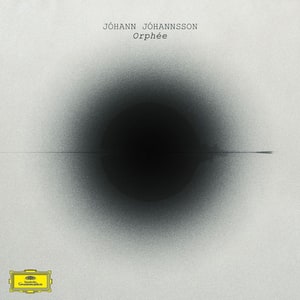
More than anyone in the contentious Venn diagram where the indie-rock record-label community meets swirling bouts of modern composition, Icelandic composer Jóhann Jóhannsson is making the greatest strides into the consciousness of the mainstream. Thanks to his relationship with directors Denis Villeneuve and James Marsh, his recent scores to The Theory of Everything and Sicario have garnered accolades no less impressive than a pair of Academy Award nominations – and it won't be exactly surprising if his breathtaking score to existential alien flick Arrival results in a third. His most dazzling recent work, however, is his first stand-alone album in nearly eight years. Orphée matches repetitive, bittersweet, gorgeous piano and string melodies with crackles of the curious shortwave radio "numbers stations" beloved by dreamers like Wilco and Cameron Crowe. Like an emotional, Arvo Pärt–esque representation of The Conet Project, Orphée shows a modern master of ambiance coaxing the Air Lyndhurst String Orchestra and vocal troupe Theatre of Voices into breathtaking washes of melancholy, swoon, nostalgia and mystery.
10. Air Max '97, 'HPE EP'

Australian visual artist Oliver van der Lugt makes conceptual bass music that deals in rubbery sound blobs, stark noises and harsh digital silence. The touchstones in both sound and aesthetics might be grime, the PC Music and Night Slugs collectives and worlds of retro-future/future-retro fashion. But this four-track EP is a unique beast that splays those slick, uncanny vaporwave noises in huge, hard-hitting 120-frames-per-second high-definition. He claims to be inspired by hyperrealism, and his sounds are well-defined and surrounded by enough silence to almost feel geometrical. Keep bouncing.
9. Tim Hecker 'Love Streams'
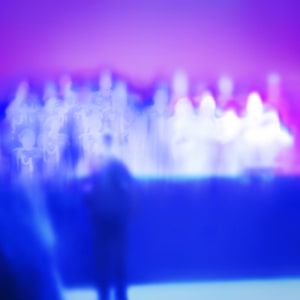
On his eighth album, Montreal digital sculptor Tim Hecker has set his sights on tweaking woodwinds and human voices. Utilizing the Icelandic Choir Ensemble, Love Streams is another master class in layered, heart-swelling atmospheres that never resort to post-rock crescendos or New Age placidity: joyous explosions, digital ringing, voices singing phonemes, tumbles of icicle synths, sounds like steel drums or AutoTuned feedback and, of course, his deep bass-rumbling drones.
8. Tanya Tagaq, 'Retribution'
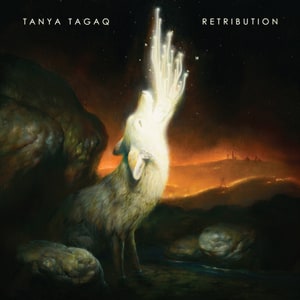
One of today's most electric, transfixing performers in any genre finally gets an album befitting her convulsive, full-body approach to vocals. Combining the guttural fireworks of Inuit throat singing and the avant-rock screams of performers like PJ Harvey and Yoko Ono, Tanya Tagaq is a master improviser who expertly blurs the lines between her subject matter and her organically distorted notes. As 2016's protest records go, if the Knowles sisters brought bullets, Tagaq is bent shrapnel, hissing and gasping and screaming on venomous tirades against environmental destruction ("Retribution"), or shivering and whispering through reflections on the abuse and murder of indigenous women (a stark cover of Nirvana's "Rape Me"). In the two months since the album was released, a global warming denier was picked to head the EPA and videos of Native American Dakota Access Pipeline protestors being harassed went viral. Retribution's subject matter has only sharpened in focus, and Tagaq's bloodletting voice remains potent.
7. Battle Trance, 'Blade of Love'
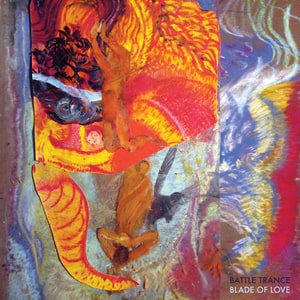
Another set of clashing frequencies and wrestling crosswinds from Brooklyn tenor-sax quartet Battle Trance, this 40-minute dronefeast turns the phrasing and techniques of contemporary jazz into a team exercise in nu-weirdo American minimalism. While their first album, 2014's Palace of Wind, laid the textural blueprint, leader Travis LaPlante (full disclosure: a friend) and his small army are more melodically confident this time around, letting the occasional bluesy lick pour alongside these swarms of reeds. Their playbook seems open and exploratory: mouthpiece humming, accelerating tornados, harsh syncopation, windblown whistles, high-pitched whines and wooshes similar to ocean waves.
6. Vijay Iyer and Wadada Leo Smith, 'A Cosmic Rhythm With Each Stroke'
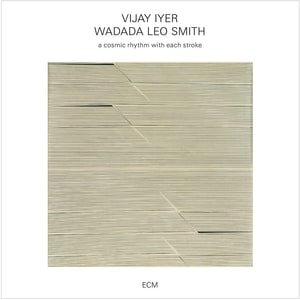
This landmark collaboration between a genre-hopping modern MacArthur Fellow and a veteran avant-jazz icon quietly launches two busy players into something minimal, cinematic and eerily ambient. Though certainly understandable as a part of ECM Records' 40-year lineage, A Cosmic Rhythm is less like labelmates Keith Jarrett or Don Cherry, and a more like an electronics-indebted companion to the ice-cold Raster Norton micro-jazz of Alva Noto and Ryuichi Sakamoto. Iyer's piano is more textural than anything, a tender subsonic Satie burble of reserved patterns and gentle cascades. Smith, conversely, has a perfectly clear and ringing trumpet, taking long expressive cries and huge equally expressive pauses. Beautiful and austere: Think Miles Davis' Ascenseur Pour l'Échafaud soundtrack for the age of artificial-intelligence flicks.
5. Brian Eno, 'The Ship'
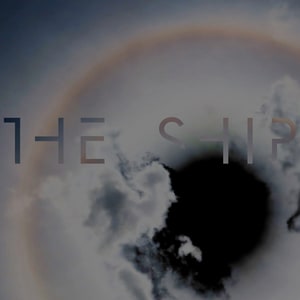
The germ for Brian Eno's latest project, he told Rolling Stone, was, "What about making a song that you could walk around inside?" The Ship's long, immersive, vocal-melody-heavy pieces are certainly songlike – catchy even – but without being tethered to rhythm. More than any Eno album, this combines all of his disciplinary muses: The gorgeous drifts of his tectonic-shifting ambient music, the generative logic of his addictive iPhone app, the dead-eyed vocals of his art-rock Seventies and the big vision of his museum installations. Plus, his long obsession with taffy-stretching tweaks on the human voice puts him in a current contextual conversation with Kanye West, Frank Ocean, Bon Iver and Oneohtrix Point Never, among others. Still, following 42 minutes of nautical ping and celestial float, a straightforward cover of the Velvet Underground's "I'm Set Free" feels like arriving at a familiar harbor.
4. Fox/Soper Duo, 'Magenta Line'
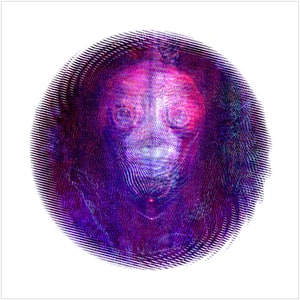
The drumming of New York City machine gun Greg Fox (Liturgy, Zs, Ben Frost) is a radioactive link between extreme metal excess and spiritual-jazz improv. On this 44-minute cassette he teams with modular synth tweaker Ryan Soper in a noise-punk antler-knot of gnashing noise. They're sometime locked together like a rock band, occasionally dueling like beasts, but usually sounding like Naked City drummer Joey Baron in a slaughterhouse. The scuzz-meets-sweat sound is reminiscent of Aughties loftcore crews like Mindflayer and Sightings, but the warm effect pedals have been updated for our harsh new digital reality. And when Fox plays psychedelic eighth notes against the void in "N," it sounds like Oneida meets harsh-noiser Kevin Drumm meets the chord progression from INXS' "The One Thing."
3. Autechre, 'Elseq 3'

Though it's hard not to think of the four hours of new music simultaneously released by Autechre in 2016 as one jittery binge-listen cycle, its longest and most monolithic piece stands alone as a sizzling, wildly modern blur of electronic music, dark ambient and 20th Century composition, sounding like a virtual-reality version of Alvin Lucier's Music on a Long Thin Wire. With swarms of dissonance, the 22-minute "Eastre" heaves and convulses and snaps like a pit of digital snakes, and the 24-minute "Mesh Cinereal" boils like a shoegaze song sputtering and coughing its way out of an industrial slurry. Save the comparatively tiny "TBM2," an interlude that plinks and booms like a corroded version of the Mantronix beats Autechre were weaned on in the Eighties, Elseq 3 is deconstructed club music in the vein of Oneohtrix Point Never, Roly Porter and Lee Gamble. Here, the textures of lost, strobe-flickered nights are spread out into an expressionist tapestry.
2. Esperanza Spalding, 'Emily's D+Evolution'
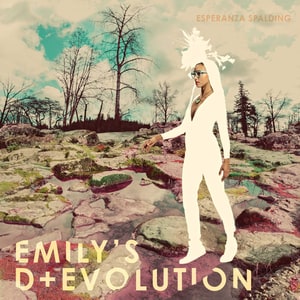
After a Best New Artist Grammy and the well-received Radio Music Society, bassist-composer Esperanza Spalding could have certainly carved out a perfectly mellow career as America's virtuosic ambassador between contemporary jazz, neo-soul and pop music. Instead, on her first album in four years, she bravely and brilliantly machetes through thornier paths, including math-metal shredding ("Good Lava"), Laurie Anderson–style vocalizing ("Rest in Pleasure," "Ebony and Ivy") and brain-boggling progressive-rock majesty ("Elevate and Operate"). This unclassifiable art-funk-prog-bop concept opus is about identity, an unflinching look at love as theater, simmering rage over dreams deferred and class privilege. "Farewell Dolly" yearns for a piece of the pie, but by album's end she's doing a dissonant yet enthusiastic cover of Veruca Salt's Willy Wonka lament "I Want It All" and taking the whole thing.
1. Kyle Dixon and Michael Stein, 'Stranger Things, Volume One and Two'
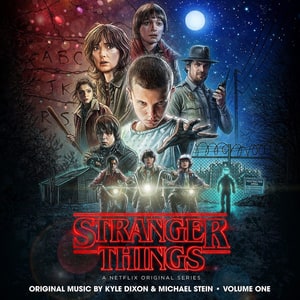
The uncanny 1983 of Netflix series Stranger Things was a communicable virus of national nostalgia; and much of the heavy lifting was done via the vintage synthesizers of composers Kyle Dixon and Michael Stein of Austin band Survive. Their warm, pulsating music gave the John Williams era a John Carpenter makeover, tapping playful and romantic melodies with the surging wash of analog keys. Seventy-four brief cues and atmospheres sprawled across four vinyl discs made this the feel-good avant-garde event of the year. More than two hours of vocal-free burbles, drones, gulps and splashes, the albums run the gauntlet from achingly wistful innocence ("Biking to School," "First Kiss") to menacing ambience ("The Upside Down," "No Weapons"), minimalist propulsion ("Gearing Up," "Breaking and Entering") and the absolute panic of 65-second heart-attack "Lights Out." The cassette and CD-R underground has been mining the knob-twiddling era of Tangerine Dream and Vangelis for more than a decade now, but the wildly popular series mixed with Dixon and Stein's diverse emotional palette will likely make this a gateway to the experimental music upside-down for years.

No comments:
Post a Comment